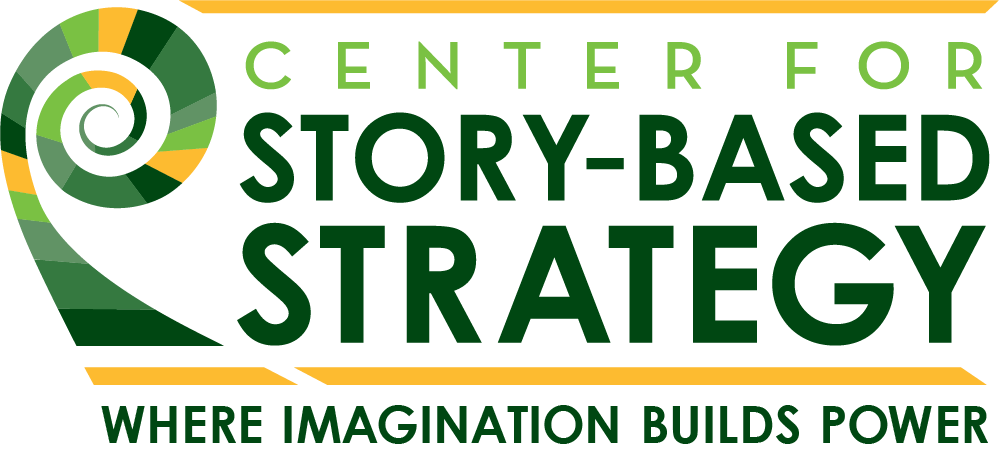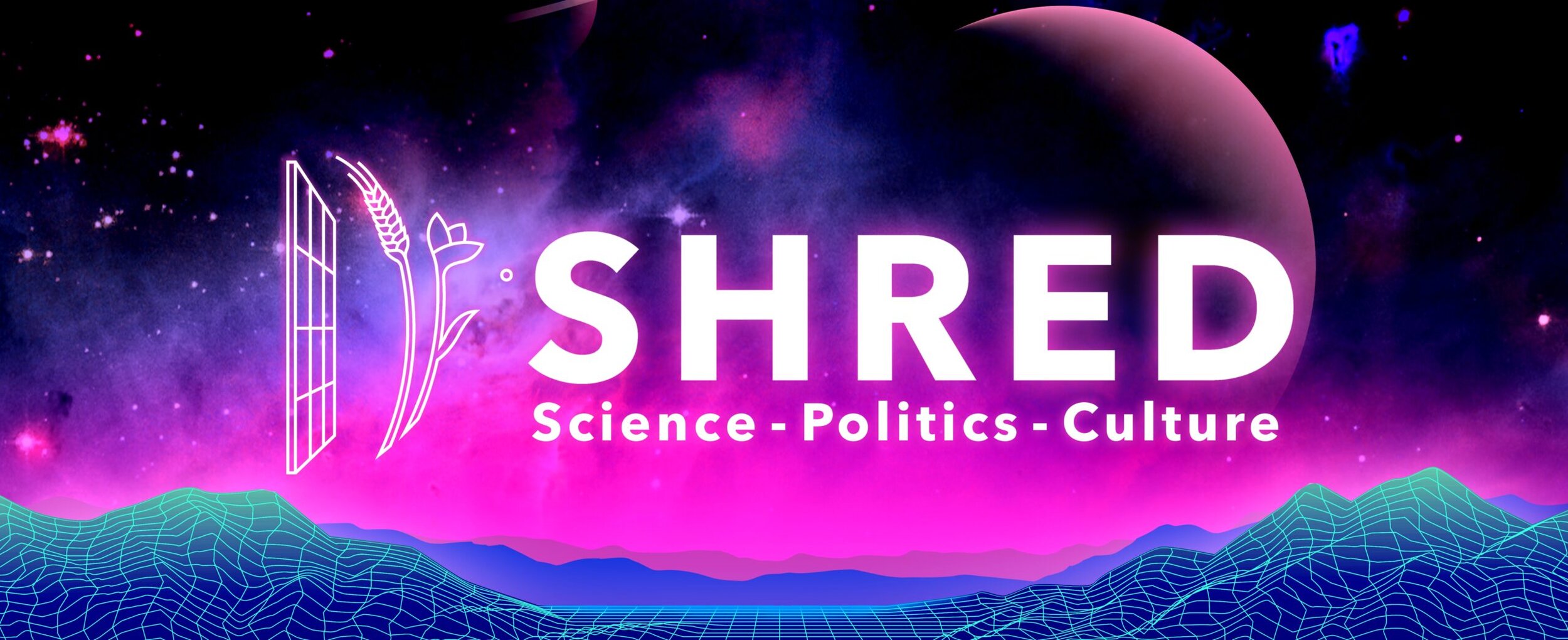Science + Politics + Culture: Going hard on story-based strategy with Ruby Pinto
Describe yourself in three words.
Union Hall, Lab, House Party
Tell us about yourself.
Shred Magazine hopes to help us understand who we are, where we came from, how we got here, and the impacts of our reflective capacity on our past, present and future. We nurture connections and conversations that illuminate the intertwined nature of culture, science and politics in an effort to help bring about a society and economy centered around joy, safety, comfort and care for all.
Team Shred
Shred emerged from conversations with friends, comrades, collaborators and loved ones that made us feel alive, curious and hopeful. As the realities of 2020 set in (pandemic risks and isolation, a powerful uprising against state violence and white supremacy, and the rising visibility of fascist ideology, to name a few), we found grounding in opportunities to exchange knowledge and help each other to orient to realities which quite literally have been developing since the beginning of time. Shared myths, biological processes and political tides became more and more inseparable as we attempted to see each other and ourselves in a sea of uncertainty.
Shred Magazine is an online space where artists, care-workers, scientists, and activists can integrate their talents to create strategies for a world centered around care, community, and abundance. This is a space for interactive and experimental discourse geared toward action. This is a space oriented toward collaboration and away from domination. We produce a wide range of content and resources, including articles, memes, comics, artwork, curricula, video essays, and podcasts as tools and inspiration for reflective creation, organizing, and political action. Our ever-expanding pool of collaborators is made up of cultural workers, researchers, educators, artists, organizers, and care workers scattered across the globe, with steering committee members currently based in Chicago, Berlin, San Francisco, Pittsburgh, New Mexico, Vermont and West Virginia.
Ruby Pinto, 2020 CSS Fellow
Ruby Pinto is Shred’s primary CSS liaison. She spent 8 years learning to organize within movements for racial, economic and queer liberation in Chicago, with a focus on prison and police abolition, working on campaigns like #NoCopAcademy, #FreeBresha and the fight to end cash bail and pretrial incarceration. She is a core member of For the People Artists Collective, a radical squad of Black artists and artists of color which emphasizes the critical role cultural workers play in social movements. During 2020, she began working in mental health care and learning about the role our nervous systems play in connection, communication and trust. Ruby is enthusiastic about building a world where basic needs are decommodified and every person has the opportunity to pursue and engage with creative expression, regardless of access to wealth. She believes that creative collaboration holds vast potential in building strong communities and a safer, more peaceful world.
Explain to us why you are doing this work
Is this radical politics?
We have to reflect on the fact that we can reflect.
We believe reflection on our own reflective capacities is necessary to organize ourselves in such a way that ensures all life on this planet has a thriving future.
From the monopolization of spirituality under empires, to the monopolization of exchange under capitalism, a great amount of harm has been done through the manipulation of symbols and narratives. We believe our liberation is tied up with a reclaiming of our reflective capacities.
It is possible for us to use our capacity for shared symbols and narratives to build a global society of care. Our aim is to deepen engagement with and draw connections between the many communities and movements that have uplifted these perspectives.
We see the tendency to reduce the flow and motion of real life to static beliefs, concepts, and identities as a stumbling block on the path to liberation. Shred Magazine is dedicated to exploring complex questions through a dialectical lens meaning (among other things) we examine the dynamic and interwoven nature of life and society holistically.
A core goal is to nurture a shared sense of culture as care work, and artists as integral to their communities, just as essential as nurses, farmers, teachers and sanitation workers (and to uplift the fact that people who do these kinds of jobs are also often cultural workers as well!). We want to unearth the underlying assumptions that allow an extractive economy to shape our cultures and the ways we engage with them. We want to make a convincing case to those who make a living through art that getting paid for your art is not enough, and that fighting for a world where everyone has access to creative expression and community is ultimately the only way to liberate culture from a framework of scarcity. When we all have housing, healthcare, healthy food and clean water, we will be able to create without competition for scarce resources.
How would you describe Story-based Strategy (SBS) to someone who has never heard about it?
Story-based strategy is a method of investigating the myths we believe, build and participate in. Bringing intentionality to the words we use and the assumptions we uplift or unearth, we use tools to take apart dominant narratives and construct the stories that will get us closer to liberation, placing our audience in the front row and inviting them to see and build the future we believe we deserve.
How did SBS affect your work on the project?
Shred on Instagram. Art by Sunny Grissom.
We didn’t initially set out to build a magazine. Our process started with a few big pieces of paper spread over a living room floor, SBS tools laid out in marker to help us make sense of and bring life to what we felt compelled to communicate. Grounded in the crisis that artists and cultural workers were facing as venues closed and gigs were cancelled as COVID 19 set in, we wanted to tell a bigger-picture story of what culture is, and why it should be considered a human right.
So we set out to name the elements of our story. Who are the characters in cultural work? Who are we told to look up to, look down on or fear? What are the conflicts, and do they change based on our position in the economic sphere? When a child takes up an instrument or a paint brush, what is foreshadowed for them in a system that rewards conformity to commodified sounds and symbols over the experience of authentic expression within a caring community? What imagery comes to mind when we think of “the arts”? And what underlying assumptions shape the economy of culture?
Over zoom calls and shared google docs, the concepts we were trying to hold in our shared understanding became more expansive, complicated and beautiful. Our team grew from three to four to a solid group of seven. And still we knew the vision would become more comprehensive and useful the more minds we could work with. And then we realized, this isn’t an essay, a pamphlet or a performance, it’s a magazine!
Using story-based strategy led us to zero in on our audience from the start, and infuse all of our foundational work with the spirit of story-telling and emotional engagement. It’s provided a structure that we can depend upon and reference, as well as an invitation to be playful and generative when we face challenges.
How was working on this project, using SBS, different from your work without SBS?
We created an SBS toolkit to anchor Shred content, featuring Cornerstones, Battle of the Story, Drama Triangles and the 4th Box, then used this toolkit to develop foundational materials and core philosophies, collaborating in small groups to really get into the details. We plan to use some version of an SBS toolkit with our contributors and collaborators, especially if someone wants to build out a curriculum, podcast, comic or ongoing series of articles. Because we’ve been using these toolkits to strengthen our narrative strategy from the very beginning, our steering committee has become very familiar with basic SBS tools. We practice placing ourselves as characters in the stories we’re telling and imagine futures we want for ourselves, with our cultural activities explicitly recognized socially as care work. We reverse engineer from there to build a bridge between now and then. Using SBS helped us to keep our content grounded in the personal rather than slipping into too much academic jargon or casting ourselves as somehow separate from the systems we are examining and challenging in our work.
Can you walk us through your process? “We had X problem, so we tried Y CSS tool and Z thing happened.”
For a long time, we felt a need for scientific and cultural questions to be addressed more systematically in our political work, but due to the fast paced, hyper specific, and often reactive nature of that work, we struggled with envisioning how such large and complex questions could be practically integrated. The unfolding of Covid-19 held us accountable to our beliefs. Faced with an unprecedented crisis that so clearly illuminated the interconnectivity of political, cultural, and scientific spheres, we were agitated to swiftly prioritize developing practical tools to organize through this dialectical, holistic, non-reductionist lens.
“We want to make a convincing case to those who make a living through art that getting paid for your art is not enough, and that fighting for a world where everyone has access to creative expression and community is ultimately the only way to liberate culture from a framework of scarcity.”
We know that language and narrative are the foundational human skills that allow us to organize ourselves into large complex societies and economies. Despite the fact that we use language and narrative all the time, we’ve found it quite difficult to create shared tools to reflect on this. The SBS tools helped us to get grounded in everyday examples, and apply consistent elements of story to these examples. We customized an SBS toolkit and held workshops to examine our foundational ideas. These workshops were highly creative, generative, and fun. They kept us grounded enough to enter more into experimental and expressive modes of thinking, which have resulted in more engaging and effective materials and communication strategies. We found the SBS concept of unpacking “underlying assumptions” to be invaluable for analyzing the nature of oppressive ideologies that would have us believe culture, science, politics, and life in general are made up of isolated, unconnected parts. We believe that undoing this, and creating frameworks and communities to organize around a holistic, dialectical perspective is essential for liberation. And now, we feel much more equipped to present these tools to people doing work on the frontlines of culture, science and politics.
What advice would you give someone just coming out of the Advanced Training about how to use CSS tools in real world settings?
Try laying out a few of your favorite SBS tools in whatever format feels most useful to you, whether that’s on big sheets of paper, in a personal notebook or in a shared online doc. Then, talk through your project or campaign as if you’re explaining it to someone for the first time. See what details emerge and fill those details into the SBS tools as you go. When you hit a really rich narrative element, dig into it, get detailed, explore how far you can go. Battle of the Story is a great container for this generative work. Be playful and experimental with how you use the tools and consider them friendly constraints to support your process, or shared guidelines within which you can collaborate and imagine.
Share how folks can get involved with your work or see your work’s final product.
You can check us out at shred-mag.com, as well as on facebook as Shred Magazine and on Instagram at @shred._.magazine. If you’d like to collaborate, send us an email at admin@shred-mag.com





